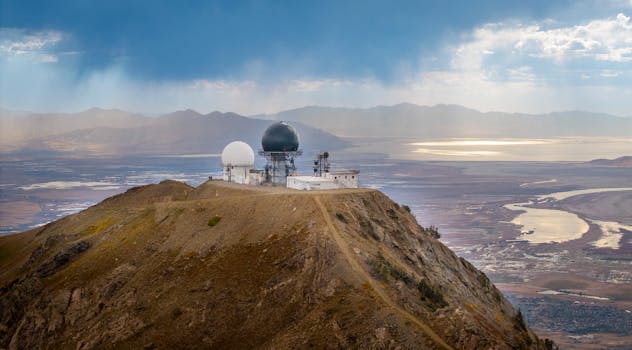MEO Satellites: Revolutionizing Global Communications with Medium Earth Orbit Technology

MEO satellites, or Medium Earth Orbit satellites, are a type of satellite that operates in an orbit between 2,000 and 36,000 kilometers above the Earth’s surface. This orbit is higher than Low Earth Orbit (LEO) satellites but lower than Geostationary Orbit (GEO) satellites. MEO satellites are revolutionizing global communications with their unique advantages, including lower latency and higher signal strength.
One of the primary benefits of MEO satellites is their ability to provide global coverage with fewer satellites. Because they are in a higher orbit than LEO satellites, MEO satellites can cover a larger area of the Earth’s surface, reducing the number of satellites needed to provide global coverage. This makes MEO satellites a more cost-effective option for many applications, including telecommunications, navigation, and Earth observation.
How MEO Satellites Work
MEO satellites work by transmitting and receiving signals to and from Earth-based stations. They use a combination of antennas and transponders to communicate with other satellites and ground stations. The signals are then routed through the satellite’s onboard processor and transmitted back to Earth. MEO satellites can be used for a variety of applications, including telecommunications, navigation, and Earth observation.
One of the key advantages of MEO satellites is their lower latency compared to GEO satellites. Because they are in a lower orbit, MEO satellites have a shorter signal path to and from Earth, resulting in lower latency. This makes them ideal for applications that require real-time communication, such as video conferencing and online gaming.
Applications of MEO Satellites
MEO satellites have a wide range of applications, including telecommunications, navigation, and Earth observation. In the telecommunications sector, MEO satellites are used to provide broadband internet access to remote and underserved areas. They are also used to provide mobile network coverage in areas where terrestrial networks are not available.
In the navigation sector, MEO satellites are used to provide location information and timing signals. They are an essential part of global navigation satellite systems (GNSS), such as GPS and Galileo. MEO satellites are also used in Earth observation applications, such as weather forecasting and environmental monitoring.
Challenges and Limitations of MEO Satellites
While MEO satellites offer many advantages, they also have some challenges and limitations. One of the main challenges is the high cost of launching and operating MEO satellites. They also require sophisticated technology to maintain their orbit and communicate with Earth-based stations.
Another limitation of MEO satellites is their vulnerability to interference from other satellites and terrestrial systems. This can result in signal degradation and loss of communication. Additionally, MEO satellites are subject to the effects of space weather, such as solar flares and cosmic radiation, which can damage their electronics and disrupt their operations.
Conclusion
In conclusion, MEO satellites are a vital part of the global communications infrastructure. Their unique advantages, including lower latency and higher signal strength, make them an ideal solution for a wide range of applications, from telecommunications to navigation and Earth observation. While they have some challenges and limitations, the benefits of MEO satellites make them an essential part of the satellite industry.



